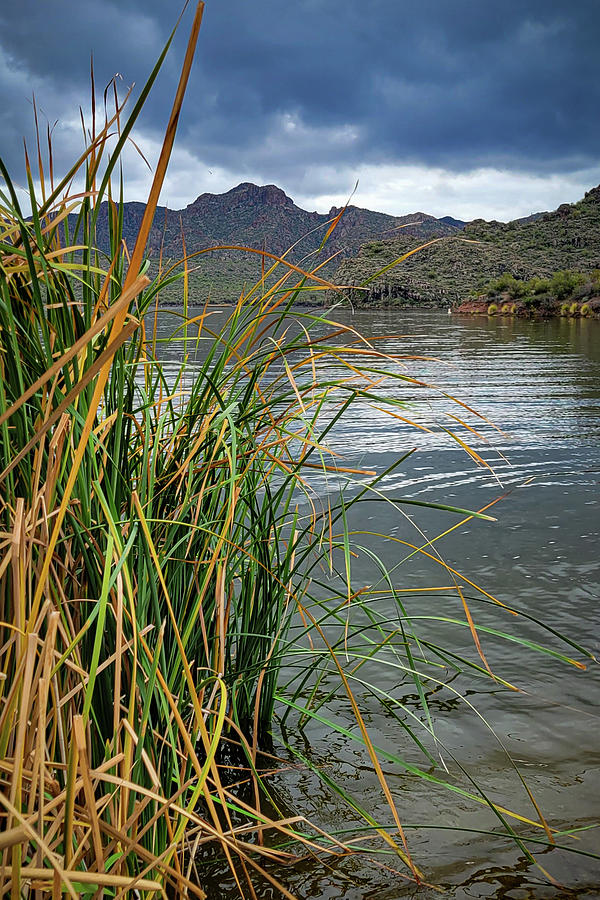
Cattail Reeds on Saguaro Lake

by Bonny Puckett
Title
Cattail Reeds on Saguaro Lake
Artist
Bonny Puckett
Medium
Photograph - Photography
Description
These reeds growing along the banks of Saguaro Lake, under a moody, stormy winter sky, in the Arizona desert serve many purposes. They help to stabilize soil and prevent erosion in the shallow waters around the shoreline of the lake. They help to filter pollutants from the water. They also provide habitat and food for many fish, birds, mammals and insects.
These reeds, widespread throughout wetlands and marshes across the United States have been an important resource for indigenous peoples in North America for thousands of years. Almost every part of the cattail plant is useful for either food, medicine or for materials for crafting and construction.
Food: The cattail plant is a valuable source of food for Indigenous peoples. The young shoots of the plant can be eaten raw or cooked and taste similar to asparagus. The yellow pollen found on the mature male flowers can be collected and used as a flour substitute. The rootstocks or rhizomes of the cattail plant are starchy and can be roasted, boiled or dried and ground into flour. The flour can be used to make bread, cakes, and porridge. The rhizomes can also be boiled and eaten like potatoes or used as a thickening agent in soups and stews.
Medicine: Cattail has been used medicinally by Indigenous peoples for various ailments. The leaves and rhizomes contain astringent properties that can be used to treat wounds, cuts, and burns. The pollen can be used as an antihistamine for allergies. The roots have been used to reduce inflammation and alleviate pain.
Materials: Cattails are used for various material purposes by Indigenous peoples. The leaves can be used to make baskets, mats, and woven goods. The stalks or stems can be used to make rafts, cordage, and thatch for roofs. The dried flower spikes can be used as kindling for fires.
Spiritual uses: Cattails have a spiritual connection within many Native American cultures. For example, the Ojibwe people use cattail fluff as a symbol of new life and renewal, and as a material for making sacred dolls. The Mohawk people use cattails to make false faces for their masked dances. In Pueblo culture cattails are associated with water and rain, and therefore may be used in rain dances. In Navajo culture cattail leaves provide protections against lightning. And many indigenous southwestern cultures used cattail pollen as a traditional face paint.
Uploaded
February 28th, 2023
Statistics
Viewed 1,028 Times - Last Visitor from New York, NY on 04/20/2024 at 3:36 AM
Embed
Share
Sales Sheet

























































